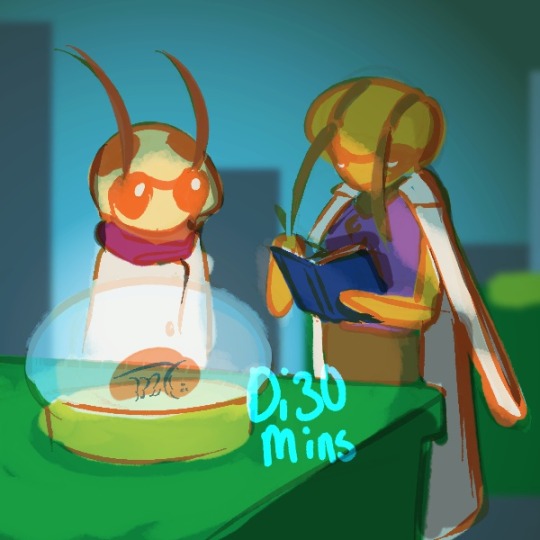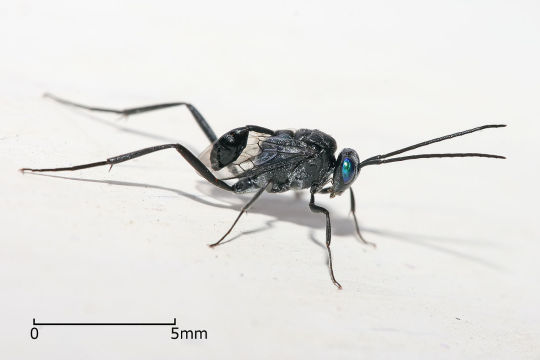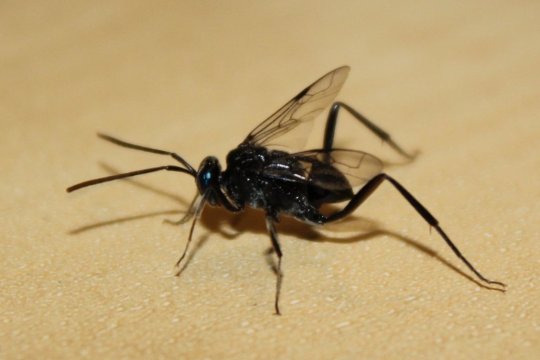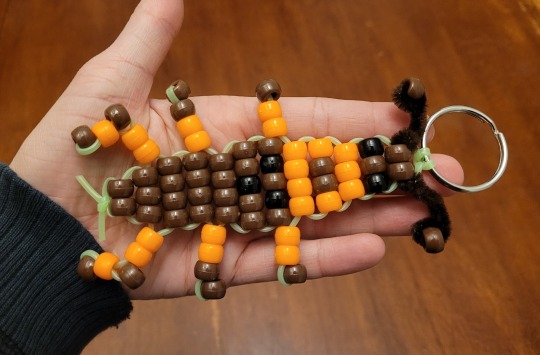#periplaneta
Explore tagged Tumblr posts
Text

An American cockroach (Periplaneta americana) nymph in Pattaya, Thailand
by Len Worthington
#i know they're a pest but to me the american cockroach is a very beautiful bug#american cockroach#cockroaches#juvenile#periplaneta americana#periplaneta#blattidae#blattodea#insecta#arthropoda#wildlife: thailand#wildlife: asia#invasive species
29 notes
·
View notes
Text
Abstract To obtain information of Periplaneta americana, we analyzed the distribution characteristics of microsatellite sequences in the P. americana transcriptome (229 MB) by using MSDBv2.4. The total number of perfect microsatellite sequences was 38 082 and covered about 0.3% of P. americana transcriptome. The cumulative length of microsatellites was 618 138 bp, and the density of microsatellites was 2978.54 bp/Mb. In the different repeat types of the microsatellites, the number of the mononucleotide repeats was 20 002 (accounting for 52.52%), which obviously was the most abundant type. While the trinucleotide, tetranucleotide, dinucleotide, pentanucleotide and hexanucleotide repeats accounted for 24.51, 12.97, 8.13, 1.61 and 0.26%, respectively. The kind of different repeat copy categories in each repeat type was also quite different, such as the A in mononucleotide repeat type, the AG in dinucleotide, the AAT in trinucleotide, AAAT in tetranucleotide, the AAGAA in pentanucleotide, and the CAGTAG in hexanucleotide were the most of each category. The A, T, AC, AG, AT, GT, AAG, AAT, ATC, ATG, ATT, CTT, AAAG and AAAT were the dominant repeat copy categories, the total number of all these types was 29 933, accounting for 78.6% in the total number of microsatellite sequences. These results based on a foundation for developing high polymorphic microsatellites to research the functional genomics, population genetic structure and genetic diversity of P. americana.
0 notes
Text

okay sure. sure. now you'll be immortalized as art, perry...it's okay...you're in a better place now...with more decaying fruits and sugary foods and whatever else you may like that any cockroach could ever dream of... -⚪️
#20 months. it takes 20 months for a periplaneta americana (american cockroach) to go from egg to adult.#which means...he was over a year old. yeah.#animal death#cockroach#bugs#insects
6 notes
·
View notes
Text
The Fallen Titan
On one of my recent nature walks I came across the deceased body of an adult Periplaneta americana. They are remarkably large. Compared to all the other insects in the city only the praying mantises beat them. (and the mantises never leave lush gardens, so they rule the streets... did you know the roach & praying mantis are close cousins?)
I thought "that is your real crime you are too large & successful, too swift and athletic you can climb, leap, fly, survive... and we hate you for that."
No ants had come to collect this dead body, so I shuddered thinking of the poison that probably laced it. But the roaches in NYC can make it to adulthood and reproduce before our best death potions kill them.
We really need a different plan. I'm still not a fan, or very sympathetic, but boy oh boy do we kill a lot of more interesting and helpful creatures in a failed bid to slay the roach.
He was dead but I know he'll have a thousand children.
Can't even be ant food. Great job everyone!
13 notes
·
View notes
Text

Bugust Challenge Day 4 (Fan Character Friday): The Director and Assistant 8.4.23
Done in 30 minutes
#Bugust#Bug Fables#BF#fan art#fan character#The Director#Asian Cockroach#Blattella asahinai#Assistant#Australian Cockroach#Periplaneta australasiae#Bubble#Magicicada#original work#digital art#digital drawing#Done in 30 minutes#Di30Mins#Daily Drawing Challenge#Bugust 2023
24 notes
·
View notes
Text
had a full on falling-apart of my brain at 4am, trying to muster the will and plan how to contain a roach (American),
so naturally as soon as i wake up i read the creature's full wikipedia page.
#i succeeded in containment#but i had to leave him under a cup on the floor#i had to go to sleep#the task sapped all my energy#now he's just over there#under the cup#and i'm so afraid of him for no reason!#it's the wings actually mostly#cockroach#american cockroach#roach#Periplaneta americana#why do they have to have wings#he was just minding his business exploring my bathroom#being entirely harmless#poor guy spent the night under a cup#phobia#roach phobia
5 notes
·
View notes
Note
hello crevicedwelling this morning i found an albino cockroach in my apartment if i wanted to keep it as a little pet what sort of setup would i need. assuming i can find it again when i get home from work. and can i just feed it little veggie scraps and things is that acceptable food for it?
there are no albino cockroaches. if it’s a solid white color, expect it to go back to normal color once it hardens its exoskeleton after it just molted. that, or you live way out in the Central American tropics and found a roach species that is normally all white, which would be very cool!
while there are pigment deficiency mutations in insects, it rarely looks “white” since the natural color of many arthropod exoskeletons is yellowish-orange even without pigment to give it color. even then insects don’t seem to show these mutations the same way that crustaceans and myriapods do. the closest thing to “albino” that happens is white-eyed mutants, like this strain of the American cockroach.
172 notes
·
View notes
Text
I love when you can look at a species name and instantly obtain useful information about the species just from the name. Like for example the American Cockroach, Periplaneta americana, just from the name you can instantly tell that it's a species native to America? Africa. Oh and the German cockroach, Blattella germanica, which is clearly (as indicated by the name) native to Asia. And who could forget the Australian cockroach, Periplaneta australasiae, clearly native to Aus- oh wait that one's native to Africa too?
103 notes
·
View notes
Text
Weird Wasp....Tuesday?
I was getting kind of down in the dumps about not having any ideas for comics for a while, but I just had to find an excuse to draw an Evaniid today. The other two came into the picture afterward. Sometimes, it can be quite a challenge to come up with an idea or scenario that incorporates some kind of joke or pun related to certain insects, especially wasps.
I'm glad this one worked out. I suppose it would have made more sense to draw an ootheca in the picture, although I am curious about wether the ootheca "appears" externally after mating? I've seen photos of female Periplaneta americana without oothecae, either that, or I'm blind, lol. I welcome any advice or corrections!
The original accompanied caption:
When cockroaches are on the menu... Ampulex compressa and Evania appendigaster are both cockroach parasitoids. A. compressa is known for "zombifying" cockroaches, by stinging them in the brain and then dragging them into the wasp's burrow by the antennae. An egg is then laid on the host. E. appendigaster, aka Ensign wasps, parasitizes roach oothecae by laying eggs into the cockroach egg cases. They also distinctively have vivid blue eyes.
This will be an interesting match! Who will win!? 🤔 😆
(Also, if rock-paper-scissors doesn't require hyphens, I can easily remove them).

#Ampulexcompressa#EmeraldCockroachWasp#EnsignWasp#Evaniaappendigaster#Periplanetaamericana#AmericanCockroach#Entomology#Hymenoptera#Apocrita#Aculeata#Parasitica#Ampulicidae#Evaniidae#Evanioidea#Blattodea#Cartoon#Comic
246 notes
·
View notes
Note
Hi so I have a question about cockroaches but before we get to it, can I ask that pictures aren't included or, if they must be, they are under a cut? I really don't want to look at one 😭
Anyway, I live in Athens, Greece and I wanted to ask if we have multiple species of roaches here? Because my entire life I've been told that these things fly but I've only ever seen one fly once. And, yeah, we get them quite often (mostly the cat's fault) so I've seen quite a few of them. So, is there a species that just doesn't fly, or are they just so dazed with all the pesticides that fail to kill them that they just have no idea what they're doing anymore?
Cockroaches in Greece:
So, apparently, there are at least 20 species of cockroach in Greece, many of which are introduced from elsewhere, with the most common being...
Black Oriental Cockroach (Blatta orientalis)
American Cockroach (Periplaneta americana)
German Cockroach (Blattella germanica)
Brown-banded Cockroach (Supella longipalpa)
Most of these species fly, but the nymphs (juveniles) do not have wings, and the female Oriental Cockroach has small folded up non-functional wings that you would not notice.
40 notes
·
View notes
Text

Grzimek's Animal Life Encyclopedia: vol. 2 - Insects. Written by Dr. Bernhard Grzimek. 1984.
Internet Archive
1.) House cricket (Acheta domesticus)
2.) German cockroach (Blattella germanica)
3.) Oriental cockroach (Blatta orientalis)
4.) American cockroach (Periplaneta americana)
#bugs#insects#crickets#house cricket#cockroaches#german cockroach#oriental cockroach#american cockroach
144 notes
·
View notes
Text

Die Lesung von “Dörte überwinden” auf dem wundervollen Klangtherapie-Festival war ein unvergessliches Erlebnis für mich.
Nie hätte ich gedacht, dass die schönste Art, um in das Berlin von Dörte zu versinken, der Halbschlaf unter Korallen ist.
Vielen Dank an alle, die das Festival möglich gemacht haben, und an alle, die sich die Zeit genommen haben, um gemeinsam zu träumen.
#Festival#Klangtherapie#Dörte überwinden#Lesung#Buch#Roman#Gedichte#Lyrik#Kurzgeschichten#Musik#Live#Periplaneta
4 notes
·
View notes
Text
timely insect post of the day
blue-eyed ensign wasp
(evania appendigaster)
this parasitic wasp is found in most climate zones on earth, and while its original native range isnt known, the speculated area of origin seems to be asia!
the wasp reproduces by laying its eggs into the oothecae of cockroaches, with its host species including the american cockroach (periplaneta americana), the australian cockroach (p. australasiae) and the brown cockroach (p. brunnea). the complete life cycle of this species can be observed in this video right here.


credits to pic. 1: Muhammad Mahdi Karim
credits to pic. 2: David Crummey
#bugs#insects#nature#entomology#insect#naturecore#biology#bug#wasp#wasps#hymenoptera#parasitic wasps
23 notes
·
View notes
Text

There's a Periplaneta americana in my coffee mug and that's the way I like it.
45 notes
·
View notes
Text
you're telling me that in lethal company the maneater is supposed to be a cockroach? with a LARVAL form? you're telling me that in just a few hundred years, cockroaches are going to have evolved a completely different life history? they're suddenly holometabolous insects now? WAIT. IT DOESN'T EVEN PUPATE? it just goes from larva to adult! so it's evolved a form of metamorphosis heretofore unseen ANYWHERE in the insect world??? and you're still calling it a cockroach!? NOT ONLY THAT but this CREATURE WHICH HAS BECOME COMPLETELY DISTINCT FROM COCKROACHES is going to be placed in the EXISTING GENUS PERIPLANETA? the same genus as the american cockroach???? HAVE ALL THE TAXONOMISTS DIED AND NO ONE CAN RECOVER THE PRACTICE? do you understand how much cockroach phylogeny changes basically every fucking year??? and you're telling me that THING is in the GENUS periplaneta??? does that LOOK like periplaneta to you??? i can accept that a cockroach in 500 years can be big enough to eat people. in fact i hope that happens. but this is too far. i don't even play lethal company
#getting mad at the lore of a game i don't even play because they got their bug facts wrong...#sorry lethal company creators. please implement lore in which all the taxonomists died and now it's all just#made up from absolutely no evidence whatsoever#please make these changes for me: someone who doesn't even play your game#this is why i could never actually be a writer#some freak somewhere is gonna judge me for making my fictional creatures wrong and i'll never recover
5 notes
·
View notes
Text

the humble periplaneta americana
#i could tell i wouldnt have enough string to make the legs very long oooops. if i could change this#i wouldve bent the second pair of legs back AND had the cerci....#i love making these but i have a lot and im running out of keychain hoops.#THEYRE SO FUN THO..... please. please buy them from me on kofi so i can get these out of my house#ans then make more.#original nonsense#pony beads#image described#bugs#cockroaches
31 notes
·
View notes